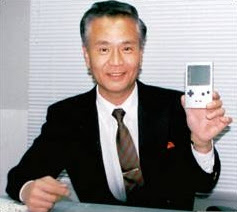Video Game History - Metroid
Video Game History - Metroid

Metroid box art
In 1986 the Nintendo Entertainment System was doing very well thanks to Shigeru Miyamoto's Super Mario Bros and Donkey Kong game franchises. The NES had become a powerhouse in gaming easily rivaling the lucrative arcade industry. However Gunpei Yokoi and his R&D1 team who previously had made some successfull games for the NES such as Duckhunt, Excitebike, and Ice Climbers wanted to show they could make a game that would rival Miyamoto's. Yokoi put together a team of four people, including Yoshio Sakamoto as art director, Hiroki Kiyota as art designer and Makoto Kanoh who would create the scenarios and concept. Yokoi would the producer. Yokoi wanted to do something completely different than Miyamoto. So rather than making a bright colourful family friendly game like Mario brothers, Yokoi would make something dark and gritty. Metroid would become a symbol of Nintendo's abilty to make adult-oriented games. It would also be one of Nintendo's first games to feature a female hero.
For the game Yokoi took inspiration from Ridley Scott's film Alien. He wanted his game to have a non-linear design. Something that was unheard of at the time. Metroid was released exclusively for the famicon Disc Systsem on August 6th 1986. However just 2 months before Metroids release 128k cartridges where released. These had much more memory than the famicon floppy discs. In 1987 Metroid was ported to a catridge. Originally it had been on a floppy disc. Metroid didn't sell badly but it was overshadowed by a much bigger hit: Legend of Zelda which had an enormous marketing campaign. Yokoi's R&D1 team moved onto other projects after Metroid. However in 1991 Yokoi would be responsible for one of the most important innovations in video game History: he created the Game Boy.
The Game Boy quickly became the most successful console in the World! Even outselling the NES!
Yokoi became a very powerful figure in the gaming industry when he decided he wanted to make a sequel to Metroid on the Game Boy no one was in a position to tell him no. The fact that Metroid had sold fairly well in the West hadn't hurt either. For Metroid 2: The Return of Samus. Hiroji Kiyotake would be directing, Hiroji had been the original artist on Metroid. The Game Boy's hardware and monochrome display was a lot more limiting than the Famicon's had been. So the game designers decided to use visual cues to show Samus's different suits. The distinctive shoulder pads introduced in the Game Boy game have remained in the series ever since. Kiyotake gave Metroid 2: The Return of Samus a much more linear design than in the previous game. However the game did introduce several new features to the franchise including wave beams, bombs, and a wall crawling morph ball. Metroid 2 the Return of Samus sold well enough although gamers had mixed feelings about the game due to it's more linear design. It would be R&D1's next game that truly have the bigger impact on the gaming industry.
After Metroid 2 on the Game Boy was released. Gunpei Yokoi's R&D1 team was split into two divisions: Intelligent Systems who would make the console games and another team who would make the handheld games.Intelligent systems was then split into more teams. One of these teams was formed by Yoshio Sakamoto with the intention on making a sequel to the original Metroid on the NES. The Third Metroid game recieved continual budget cuts from Nintendo and was even cancelled three times as it was the biggest game on a cartridge at the time and so a big finacial risk. Metroid 3 was a very ambitious game it had huge set pieces, bosses and a more elabourate story. Metroid 3 would have a non-linear design. This meant it ended up being one of the earliest games players would do speed runs on. Players would see how fast they could get from the game start to the end credits. While Skipping areas or exploiting bugs help give them a better time. The soundtrack in Metroid 3 was composed by Kenji Yamamoto. It was his debut game score and is often regarded as being one of the best video game scores of all time. However like with the previous two Metroid games in the series. Metroid 3 did not sell particularly well in Japan. This was not because it was a bad game. It was due to the stiff competition of the day. It was overshadowed by Donkey Kong Country which had beautiful pre-rendered graphics, also the PlayStation and Sega Saturn consoles where soon to be released.




0 Comments
Recommended Comments
There are no comments to display.